Although men's clothing isn't characterized by as many drastic changes of silhouette as the dress, suit styles can still be noticeably quite different. While the zoot suit and "Victory" suit were both worn during the World War II years, they both looked and stood for opposite things. The "Victory" suit was conceived of as part of the conservationist war effort, with no excess fabric or embellishments, while the complex zoot suit was a luxury purchase focused on establishing an identity for the wearer.
Identification of the Victory Suit
The American "Victory" suit, which was known as the "Utility" suit in England, was made of a wool-synthetic blend and defined more by what it didn't include than what it did. Consisting of a short jacket with narrow trousers, it had no buttons that weren't useful, no pleats, cuffs or patch pockets. If a suit was double-breasted, it had no accompanying vest, and an additional pair of pants was no longer part of a suit set.
History of the Victory Suit
The "Victory" suit came about thanks to government regulations in 1942 controlling the amount of fabric used to make the garment, thus was never really a natural evolution of fashion or something worn because people liked the look. During that period, men were permitted to wear suits constructed in the pre-war years of varying styles, and frequently did so. However, as the use of fabric was limited due to the war, with any excess going to the soldiers, when people wore the "Victory" suit, they felt they were helping the troops, giving up already limited resources and being patriotic.
Identification of the Zoot Suit
A term derived from 1930s jazz culture, "zoot" meant something performed or worn flamboyantly and eventually began to describe the type of suits young black men wore during the period. The trousers were high-waisted, very wide-legged, and tapered into tight cuffs at the hem, while the jacket was very long, with padded shoulders and wide lapels. A zoot suit was often worn with a felt hat, pointy shoes and a long watch chain.
History of the Zoot Suit
The zoot suit, seen on jazz musicians such as Dizzie Gillespie, became a popular choice for youth, and was often worn by those from impoverished backgrounds or minority groups, as well as legendary activists Malcolm X and Cesar Chavez. After both the war and rations ended, the zoot suit emerged as part of mainstream fashion, and a slimmer version was advertised in the late 1940s as the stylish antithesis to the "Victory" suit.
Zoot Suit Riots
In the early 1940s, a conflict began to grow between the servicemen, who were restricted to the "Victory" suit during off-duty periods, becoming increasingly vexed by the zoot suit wearers' confident attitudes and lavish use of materials. Finally, in 1943 in Los Angeles, Pittsburgh, and Detroit, white military men started riots in black and Latino areas, beating those wearing zoot suits, tearing up their clothes and cutting their hair. Although the servicemen were largely to blame, the government and media defended their actions, and victims were arrested more often than the aggressors, leaving a memory of the incident as an uncorrected injustice.
Related Articles

What Are Psychedelic Clothes?
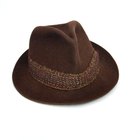
1950s Gangster Clothes

How Did Teenagers Dress in the '60s & ...

Children's Clothes in 1910

What Do Women Pirates Wear?
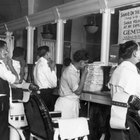
Men's Fashion of the 1930s

Men's Clothes & Styles in the 1920s & ...

What Did Men Wear in the '50s?

What Teenagers Wore in the 1940s

The History of Denim Jackets
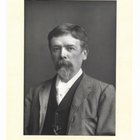
Men's Fashion in the 1890s

What Did Men Wear During the ...
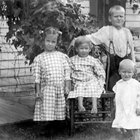
Children's Clothes in 1915

How Did Men Dress in the 1960s?

About Apache Indian Clothing

The History of Pinstripe Suits

How to Dress Like Bono

Clothing Ideas for a 1970s-Themed Party
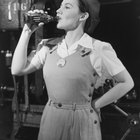
Women's Clothes in 1943

Guys' Greaser Clothes of the '50s
References
Writer Bio
Ann Li has been writing since 2007. She contributes to eHow and international fashion blogs. Li has an Associate of Arts in design and is pursuing a Bachelor of Arts in English from the University of California, Berkeley.